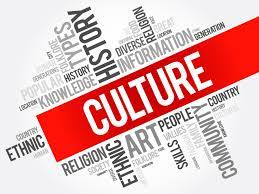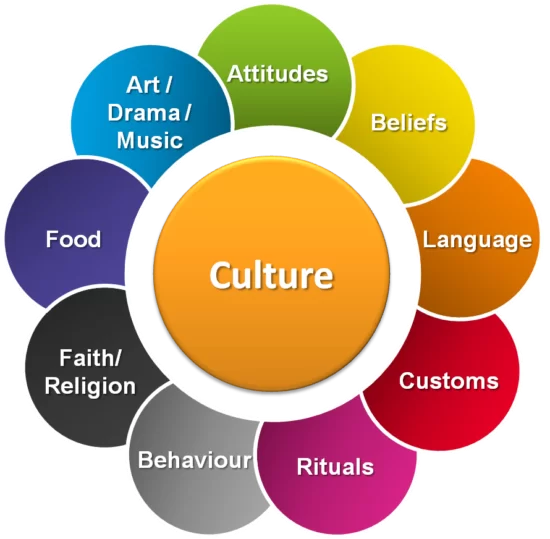**Exploring the Rich Tapestry of Cultural Heritage: A Journey Through Time**

Culture, a term that encompasses the beliefs, customs, arts, and social behaviors of a particular group or society, is a vibrant tapestry that weaves together the essence of humanity. It is the lens through which we perceive the world, shaping our identities and influencing our interactions. From the ancient civilizations of Mesopotamia and Egypt to the modern-day metropolises of New York and Tokyo, culture is the invisible thread that connects us all.
**The Importance of Preserving Cultural Heritage**
Cultural heritage, the legacy of physical artifacts and intangible attributes of a group or society, is a testament to our collective history and identity. It serves as a bridge between the past, present, and future, allowing us to understand our roots and envision our potential. From UNESCO World Heritage sites like the Pyramids of Giza to traditional crafts such as Japanese tea ceremonies, cultural heritage enriches our lives and inspires us to create.
**Celebrating Diversity Through Cultural Exchange**
Cultural exchange, the sharing of ideas, customs, and traditions between different cultures, is a celebration of diversity. It fosters understanding, tolerance, and respect, breaking down barriers and building bridges between people. Whether through music festivals like Coachella, culinary experiences like the fusion cuisine of Singapore, or artistic collaborations like the ballet performances of the Bolshoi Theatre, cultural exchange enriches our lives and expands our horizons.
**Challenges in Preserving and Promoting Cultural Heritage**
Despite its significance, cultural heritage faces numerous challenges in the modern world. Urbanization, globalization, and environmental degradation threaten to erode the physical and intangible aspects of our cultural heritage. Additionally, economic pressures and political conflicts can lead to the neglect or destruction of cultural sites and practices. To address these challenges, concerted efforts are needed to preserve and promote cultural heritage through education, conservation, and sustainable development.
**The Role of Technology in Preserving and Promoting Cultural Heritage**
Technology, particularly digital technology, plays a crucial role in preserving and promoting cultural heritage. From 3D scanning and virtual reality to digital archives and online exhibitions, technology offers new ways to experience and appreciate cultural heritage. Platforms like Google Arts & Culture and initiatives like UNESCO's Memory of the World program leverage technology to make cultural heritage more accessible and engaging to a global audience.
**Exploring the Rich Tapestry of Cultural Heritage**
Culture is the fabric that binds societies together, weaving a narrative of traditions, beliefs, and customs that define a group's identity. As we embark on a journey through time, we uncover the layers of cultural heritage that have shaped human civilization.
**The Foundations of Cultural Heritage**
At the core of cultural heritage are the ancient civilizations that laid the groundwork for our modern societies. From the monumental architecture of the Egyptians to the philosophical teachings of the Greeks, these early cultures left an indelible mark on history. Their artifacts, writings, and traditions serve as a window into the past, offering insights into the values and beliefs that guided their lives.
**Cultural Exchange and Evolution**
As civilizations interacted through trade, conquest, and exploration, cultural exchange became a driving force in shaping our world. The Silk Road, for example, facilitated the exchange of goods, ideas, and technologies between East and West, leading to the spread of new religions, artistic styles, and culinary traditions.
**Preserving Cultural Heritage for Future Generations**
Despite the passage of time, many aspects of our cultural heritage remain intact, thanks to the efforts of preservationists and historians. UNESCO, through its World Heritage program, recognizes and protects sites of outstanding cultural significance, ensuring that they are safeguarded for future generations.
**Challenges and Opportunities in Cultural Heritage Preservation**
However, cultural heritage faces numerous challenges in the modern world. Urbanization, climate change, and armed conflict threaten to destroy or degrade important cultural sites. Additionally, the rapid pace of technological advancement has led to the erosion of traditional practices and languages, putting at risk the intangible aspects of cultural heritage.
**Embracing Diversity in Cultural Heritage**
As we strive to preserve our cultural heritage, it is essential to recognize and celebrate the diversity of human expression. Each culture has its own unique traditions and practices that contribute to the richness of our global heritage. By embracing this diversity, we can foster understanding and respect among different peoples, ensuring that our cultural heritage continues to thrive for generations to come.
**Conclusion**
In conclusion, cultural heritage is a testament to the creativity, ingenuity, and resilience of human civilization. It is a reflection of who we are and where we come from, serving as a source of inspiration and pride for all. By exploring and preserving our cultural heritage, we can ensure that its legacy endures, enriching the lives of future generations and connecting us to our shared past.
Culture is a dynamic and multifaceted expression of our shared humanity. It reflects our values, beliefs, and aspirations, shaping our identities and connecting us to each other. By preserving and promoting cultural heritage, we can celebrate our diversity, foster understanding, and build a more inclusive and harmonious world for future generations to enjoy.




You must be logged in to post a comment.